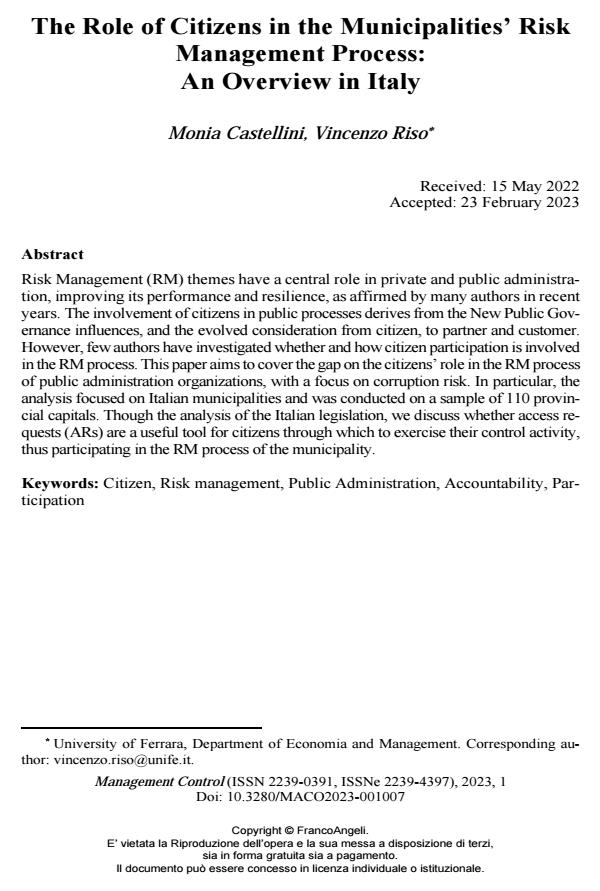The Role of Citizens in the Municipalities’ Risk Management Process: An Overview in Italy
Titolo Rivista MANAGEMENT CONTROL
Autori/Curatori Monia Castellini, Vincenzo Riso
Anno di pubblicazione 2023 Fascicolo 2023/1
Lingua Inglese Numero pagine 21 P. 143-163 Dimensione file 250 KB
DOI 10.3280/MACO2023-001007
Il DOI è il codice a barre della proprietà intellettuale: per saperne di più
clicca qui
Qui sotto puoi vedere in anteprima la prima pagina di questo articolo.
Se questo articolo ti interessa, lo puoi acquistare (e scaricare in formato pdf) seguendo le facili indicazioni per acquistare il download credit. Acquista Download Credits per scaricare questo Articolo in formato PDF

FrancoAngeli è membro della Publishers International Linking Association, Inc (PILA)associazione indipendente e non profit per facilitare (attraverso i servizi tecnologici implementati da CrossRef.org) l’accesso degli studiosi ai contenuti digitali nelle pubblicazioni professionali e scientifiche
Risk Management (RM) themes have a central role in private and public admin-istration, improving its performance and resilience, as affirmed by many authors in recent years. The involvement of citizens in public processes derives from the New Public Governance influences, and the evolved consideration from citizen, to partner and customer. However, few authors have investigated whether and how citizen participation is involved in the RM process. This paper aims to cover the gap on the citizens’ role in the RM process of public administration organizations, with a focus on corruption risk. In particular, the analysis focused on Italian mu-nicipalities and was conducted on a sample of 110 provincial capitals. Though the analysis of the Italian legislation, we discuss whether access requests (ARs) are a useful tool for citizens through which to exercise their control activity, thus partici-pating in the RM process of the municipality.
Parole chiave:Citizen, Risk management, Public Administration, Accountability, Participation
Monia Castellini, Vincenzo Riso, The Role of Citizens in the Municipalities’ Risk Management Process: An Overview in Italy in "MANAGEMENT CONTROL" 1/2023, pp 143-163, DOI: 10.3280/MACO2023-001007